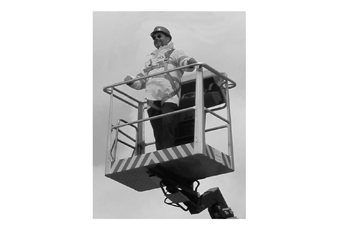 The US Occupational Safety and Health Administration (OSHA) has rescinded its January 2009 letter of interpretation #20070823-7896 on the use of shock absorbing lanyards in aerial work platforms (AWPs).
The US Occupational Safety and Health Administration (OSHA) has rescinded its January 2009 letter of interpretation #20070823-7896 on the use of shock absorbing lanyards in aerial work platforms (AWPs).
The 2009 letter of interpretation had created uncertainty in the industry by suggesting that a manufacturer’s requirement for a minimum anchorage point elevation of 18.5 feet would prevent the use of a fall protection system (6-foot lanyard with shock absorber, full body harness) in an aerial lift. This question was previously put to OSHA due to concerns that at times the distance between the platform and the ground would be less than 18.5 feet.
The OSHA Directorate of Construction (DOC) has now rescinded the above letter of interpretation in an August 2011 memorandum to its regional administrators. In a carefully worded statement, it stated:
“OSHA did not ban the particular lanyard but stated, based on the manufacturer’s instructions, which stipulated a minimum anchor point height of 18.5 feet, that it was likely that the lanyard’s use would not comply with OSHA standards at lower height. In such cases, use of the lanyard below 18.5 feet would apparently not provide adequate fall protection. This determination has raised questions about the use of body harnesses, typically married to appropriate lanyards, for fall protection in aerial lifts. To help avoid any confusion on the issue, DOC is rescinding the January 2009 letter.”
Tony Groat, IPAF USA, commented, “In rescinding this letter, OSHA is not concluding that the application described above is acceptable, rather it is clarifying that fall protection systems should not be based solely on information provided by the manufacturer, but should also take into account OSHA regulations and results of the job-specific risk assessment. IPAF believes that the primary choice for fall protection should be a restraint system, which stops the fall in the first instance.”
The International Powered Access Federation (IPAF) continues to stand behind its 2007 technical guidance H1 which provides clear and simple recommendations for personal fall protection (PFP) in AWPs. This guidance states: “When working from a boom-type AWP, it is strongly recommended that a full body harness with an adjustable lanyard be used to provide work restraint. The lanyard should be adjusted to be as short as possible (and may have a shock absorbing section if permitted by the AWP manufacturer).”
IPAF has also worked with other industry associations to produce the Statement of Best Practices of Personal Fall Protection Systems for Aerial Work Platform Equipment. This educational document clarifies when and how to use PFP systems on AWP equipment and is based on ANSI standards.
Both this document and technical guidance H1 are available at the Publications section of www.ipaf.org and www.awpt.org. American Work Platform Training (AWPT) is the North American subsidiary of IPAF.
Fall protection and recognizing and avoiding hazards when using aerial lifts will be among the topics covered at the IPAF US Convention being held on November 1 and 2, 2011 at the Crowne Plaza O’Hare in Chicago. Confirmed speakers include representatives from OSHA, NIOSH, RSC Equipment Rentals, Skyjack, and the International Union of Operating Engineers.
Details on registration, program, and the venue are at www.ipaf.org/usconvention.











